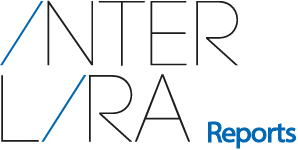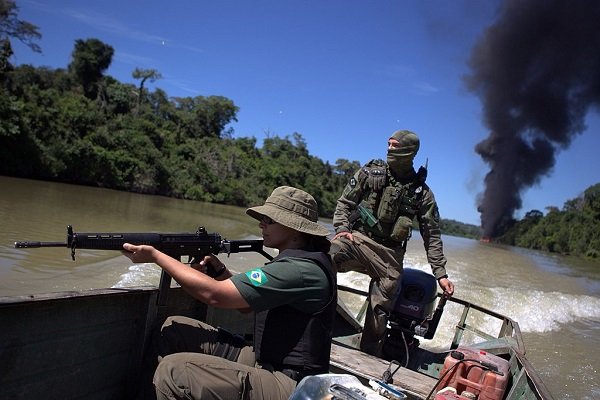Summary
The Amazon usually becomes the subject of headlines of newspapers all over the world because of increasingly common environmental crimes in the region. The expansion of the main organized crime factions in the area is adding another element of instability to this already delicate landscape. Reports indicate that the gangs have expanded their illicit activities and expanded from the drugs market to start financing miners, loggers and other criminal entrepreneurs that harm nature and increase local violence in the forest and in the cities of the area.
A Convenient Relation
In January of this year, the Amazon Institute of Man and Environment (Imazon) revealed that deforestation in the Amazon hit a new record in 2022. In that year, vegetation cover of the forest lost 10,573 km², the equivalent of almost 3,000 soccer fields per day. According to researcher Aiala Colares Couto, professor at the Universidade do Estado do Pará (UEPA) and Brazilian Public Security Forum member, the drug trafficking gangs are behind the accelerated expansion of the environmental crimes in the Amazon Forest.
Furthermore, their presence and growth in the region represents a significant deterioration in the region’s security conditions. Among the most worrying data that confirms this process is the exponential increase in violent deaths in the Amazon region. Between 1980 and 2019, the homicide rate grew by 260% in the states of the North region, while in the Southeast this rate dropped by 19%.
Primarily interested in the control of the border and of important drug routes, the gangs discovered that squatting, mining, logging, extorting, hunting and fishing could be profitable additional activities for them too. They can give extra resources when the main business is hit hard by competition or the authorities.
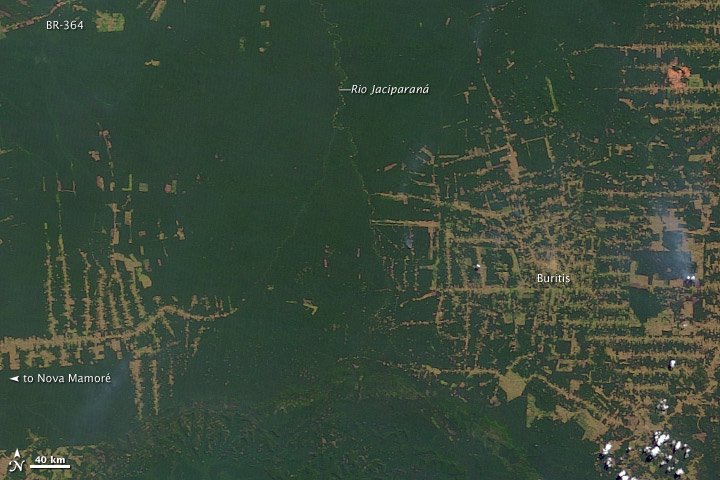
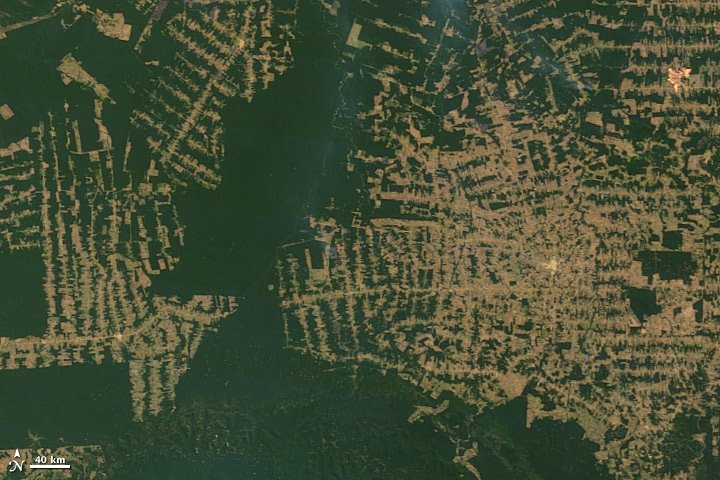
However, this connection is not only based on profits, but also on the chances to launder money. Colares explained in an interview to the BBC that drug traffickers “see that these illegal networks are important for expanding resources and money laundering”.
Having a good place to hide from law enforcement is another positive outcome of this relation between drug trafficking and illegal extraction of resources. Having “bases” inside isolated federal lands allow them to escape from state and city security forces. The illegal mines or logging areas become havens for the criminals because only the small contingent of federal forces can operate there, and this reduces the chances of operations.
For their turn, miners, loggers and others see the gangs as an opportunity to finance their activity. They can also benefit from their protection and logistic support.
A Deadly Example – Dom e Bruno’s Case
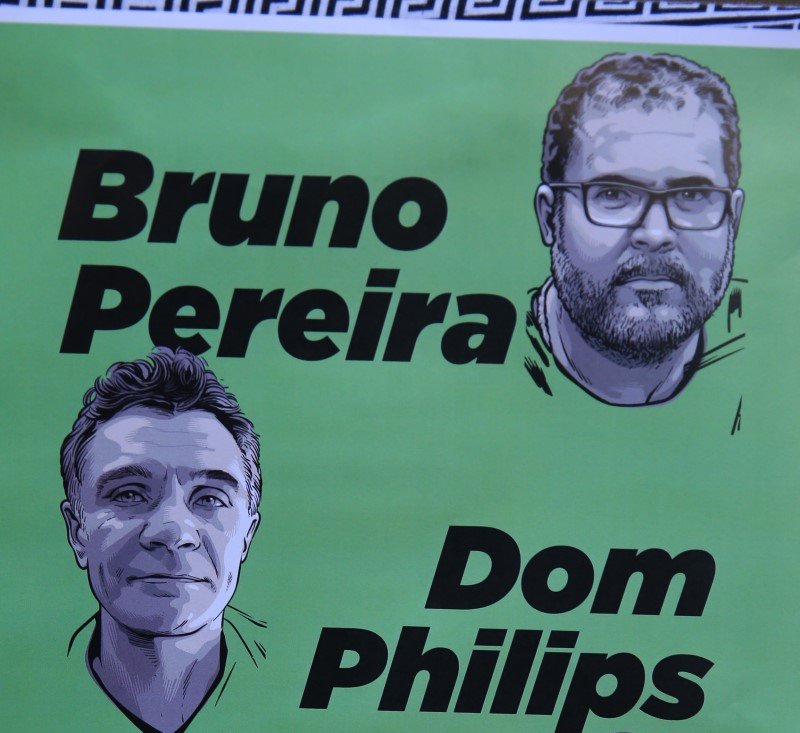

The result of this partnership between miners, loggers, hunters, fishermen and drug traffickers lead to several violent incidents. The most affected group are the different indigenous peoples. Those who defend them and denounce the crimes are also frequently targeted.
A recent and notorious case was that of Brazilian indigenist Bruno Pereira and British journalist Dom Philips. On 6 June 2022, the Union of Indigenous Peoples of the Javari Valley (Univaja) issued an alert that Dom and Bruno had disappeared while trying to reach the municipality of Atalaia do Norte (Amazonas) by boat. They were returning from a few days of work in the region and would have witnessed and recorded the perpetration of environmental crimes.

Through investigations, on the 15 of the same month, the Federal Police (PF) arrested a fisherman who confessed to the murder and pointed out the location of the bodies. Members of the Federal Public Ministry claimed that one of the hypotheses investigated was that the illegal fishermen involved in the crime were financed or armed by a criminal organization operating in the region.
Criminal Factions in the Amazon
The expansion of drug gangs in the Amazon began with the transfers of prisoners from one state to another, after the creation of federal prisons in 2006. This way, members of the major factions from the Southeast – First Capital Command (Primeiro Comando da Capital – PCC) and Red Command (Comando Vermelho – CV) – came into contact with members of regional groups and helped the internalization process of the factions to different regions of the country, including the Amazon. After that, the association with miners and loggers was quick.
The examples given by PCC and the CV, which were born respectively in the prison systems of São Paulo and in Rio de Janeiro, led to the birth of local factions inspired by their major counterparts.
The first to gain power and fame was the Northern Family (Família do Norte – FDN). It emerged in 2007 and took shape in the prisons and on the outskirts of Manaus. Another faction that has been gaining ground in recent years is the Class A Command (Comando Classe A – CCA), which in July 2019 became known by massacring 62 prisoners linked to the CV.
Lately, FDN’s power has been dwindling, and a new generation of groups is appearing through internal divisions. The Northern Cartel (Cartel do Norte – CN), and the Amazon Revolutionaries (Revolucionários do Amazonas – RA) are two of them. There is also The Locals (Os Crias) that operates mainly in the Tabatinga region, on the triple border with Colombia and Peru. It would also be the faction that controls crime in the Vale do Javari region, Dom and Bruno were killed. A good part of the entry of cocaine into the country takes place along the routes of the Solimões and Javari rivers, where the activities of these organized groups are strong.
The Major Criminal Organizations
Despite this profusion of local gangs, CV and PCC remain the main criminal organizations in the Amazon area. In Pará, according to data from the State Prosecutor’s Office, the individuals associated to the Red Command have already surpassed 23,000, with an increase of about 1,000 new members per year. The CV operates on the so-called Solimões Route —one of the 900 indicated on a study by the United Nations (UN) — to transport drugs from Peru, Bolivia, and Colombia through the rivers of the Amazon.
For Colares, the CV is the most hegemonic group in the Amazon. It controls many territories through guerrilla and urban war tactics. This happens mainly in large cities and metropolitan areas, such as Belém, Altamira, Parauapebas, and Manaus. The faction also works like a militia, extorting merchants, residents and companies, but also controlling retail drug sales.

The PCC, on the other hand, has more control over Roraima and Rondônia. In the second state, the faction has taken a stance of bringing regional groups into its orbit of influence and allowing them to operate. It currently organizes and invests in trafficking routes through the Amazon in a business logic, in order to transport cocaine to Europe and avoid meddling with retail sales.
The Yanomami Indigenous Land, in Roraima state, is an important territory under the control of the First Command of the Capital (PCC). The group has been present in Roraima since 2013 but began prospecting in 2018. According to Justice and Public Security Minister Flávio Dino, the PCC acts by supplying weapons and heavy machinery to prospectors, providing security services, and helping to remove gold from the Amazon. It also manages prostitution and drug trafficking networks in Yanomami lands.
Researchers and police reports indicate that one of the main cocaine export points is Porto Vila do Conde, in Barcarena, Pará. Here the connection between loggers and drug commerce is once again made evident. In several of the seizures at the port, cocaine was packaged together with smuggled lumber. These groups gain with drugs and wood.
Reality in Numbers
The actions of criminal groups have been reflected in the daily lives of the population in the North region of Brazil. One in five violent deaths registered in Brazil in 2022 happened in the states that are part of the Legal Amazon (Amazonas, Acre, Rondônia, Roraima, Pará, Maranhão, Amapá, Tocantins and Mato Grosso), according to data from the 2023 Brazilian Yearbook of Public Security. Together, these states had 9,302 intentional violent deaths (IVD). Across Brazil, according to the report, there were 47,508 violent deaths in 2022.
Data indicate that the Legal Amazon has a rate of cases of IVDs well above the national average: there are 33.8 deaths per 100,000 inhabitants, against 23.4 in all of Brazil. Intentional violent deaths include cases of intentional homicide, robbery, and bodily injury followed by death, deaths resulting from police interventions and femicide.
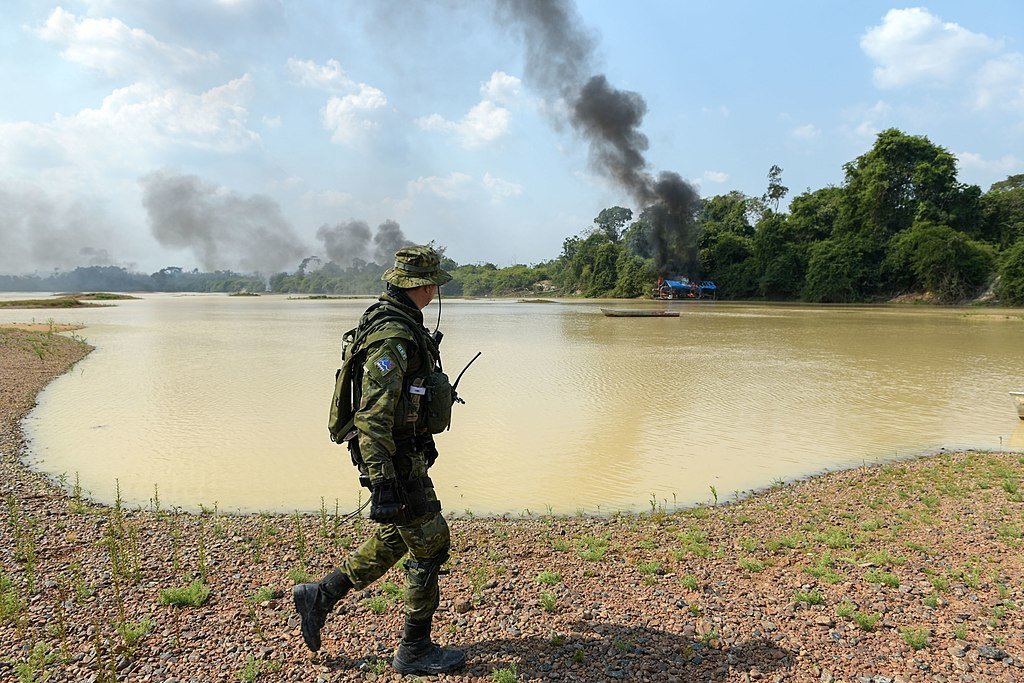
Among the states of the Legal Amazon, Pará had the highest number of intentional violent deaths in 2022, with 2,997 cases. On the other hand, when looking at the death rate per 100,000 inhabitants, Amapá has the highest rate: 50.6. Pará, Rondônia, Tocantins and Mato Grosso had an increase in the number of violent deaths. The biggest increase happened in Mato Grosso, with a variation of 18.9%.
Neighboring countries
The central point of getting involved in the extraction of natural resources is the consolidation of drug routes on the border. South America has a special interest in the matter as it is currently one of the regions most affected by problems resulting from transnational organized crime activities.
The importance becomes clear when considering the fact that nearly 90% of the cocaine originates in Colombia, Peru and Bolivia and then passes through the routes on the rivers Solimões, Amazon, etc. to access the ports on the Atlantic.
Brazilian criminal organizations occupy an important space in this logistics chain, because the country is both, a transit place and a consumer market. With its location between the coca-producing Andean countries and the European market, criminal groups understand the potential for profits, and seek leadership on the border – mainly the PCC and the CV –, including the Amazonian stretch.
In mid-2019, it was estimated that there were approximately 400 members of the PCC in Paraguay, but the group also has connections or members in Suriname, Argentina, Guyana, Chile, Uruguay, Venezuela, Colombia, Peru. The CV has arrived in Peru, Venezuela, Colombia, French Guyana, and Paraguay. Their goal is to guarantee the commerce of skank (marijuana) and cocaine. When direct members are not in foreign lands, the groups have partnerships with local groups. For instance, the CV maintains a partnership with the Venezuelan Southern Train (Tren del Sur).
Perspectives
Following the national trend, intentional violent deaths (IVD) fell in 2022 by 2.7% in the North region, but they are still higher than the country’s average. While the country has 23.4 IVDs per 100,000 inhabitants, the North region accumulated 36.5, a bit behind the worst region, the Northeast, with 36.8.
The numbers represent the impact of gang violence and of the expansion of illegal activities in the communities inside the forest and on the border, where drug traffickers fight for the main smuggling routes dedicated to the wholesale market.
At the same time, the IVD is a result of constant fights in large urban centers, where the multiplication of criminal factions fuels a never-ending war for small and medium drug sale points dedicated to the retail market.
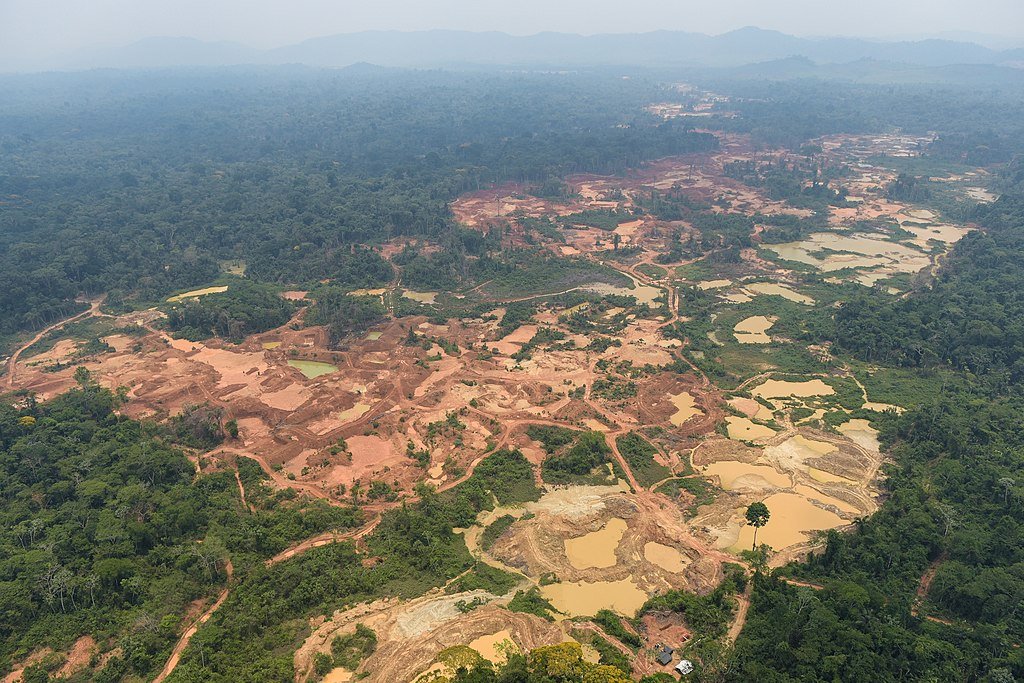
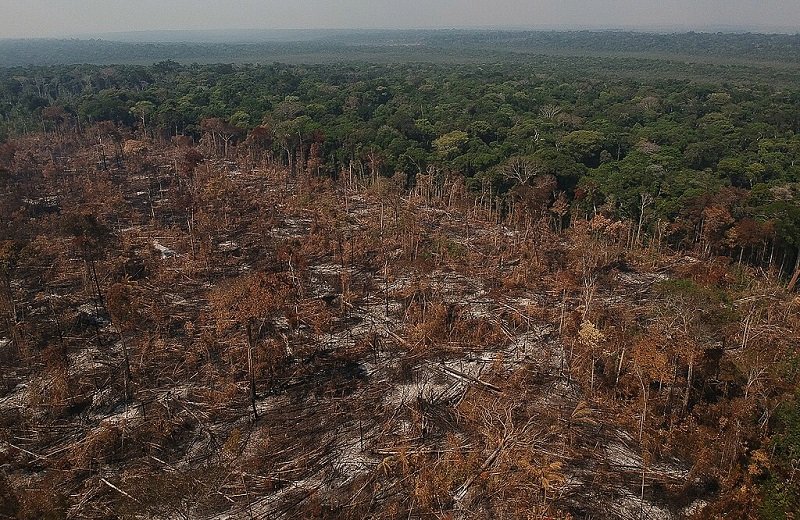
As the control drug routes and the association with loggers and miners give gangs economic advantages, the inability of authorities to repress this expansion in the North zone and inside the Amazon area may allow the organized crime to reach new levels and strengthen themselves not only in the region but also in the neighboring countries.
Understanding the negative scenario in the region and under international pressure, especially by nations that finance funds for the Amazon, the Federal Government has started to act. In February, security forces put in place an operation to go after illegal activities on the Yanomami Territory in the Brazilian state of Roraima. Thousands of miners and loggers were expelled. This zeroed for the first time the number of new illegal mines since 2020.
Moreover, authorities announced a plan to improve security in the area. On Thursday (20/07), Justice and Public Security Minister Flávio Dino announced on a social network a list of actions planned by the government to deal with the growing violence in the Amazon.
President Luiz Inácio Lula da Silva instituted multiple reforms to stop illicit mining as well. Additional security forces were sent to affected areas and stricter regulations on the gold trade were implemented.
Nonetheless, the government’s operation will hardly remain for a long period, due to its size, and the fact that it generates high financial and political costs to cover large areas with several agencies.
Another challenge is the fight against organized crime inside the urban centers, which begins with work opportunities for the local population, particularly after the closure of the illegal lumber works and mines. Despite their status before the law, they are traditional occupations in the region and some of the few opportunities for the poorest to work. For this reason, they have support from local politicians, a group that is an obstacle too.

